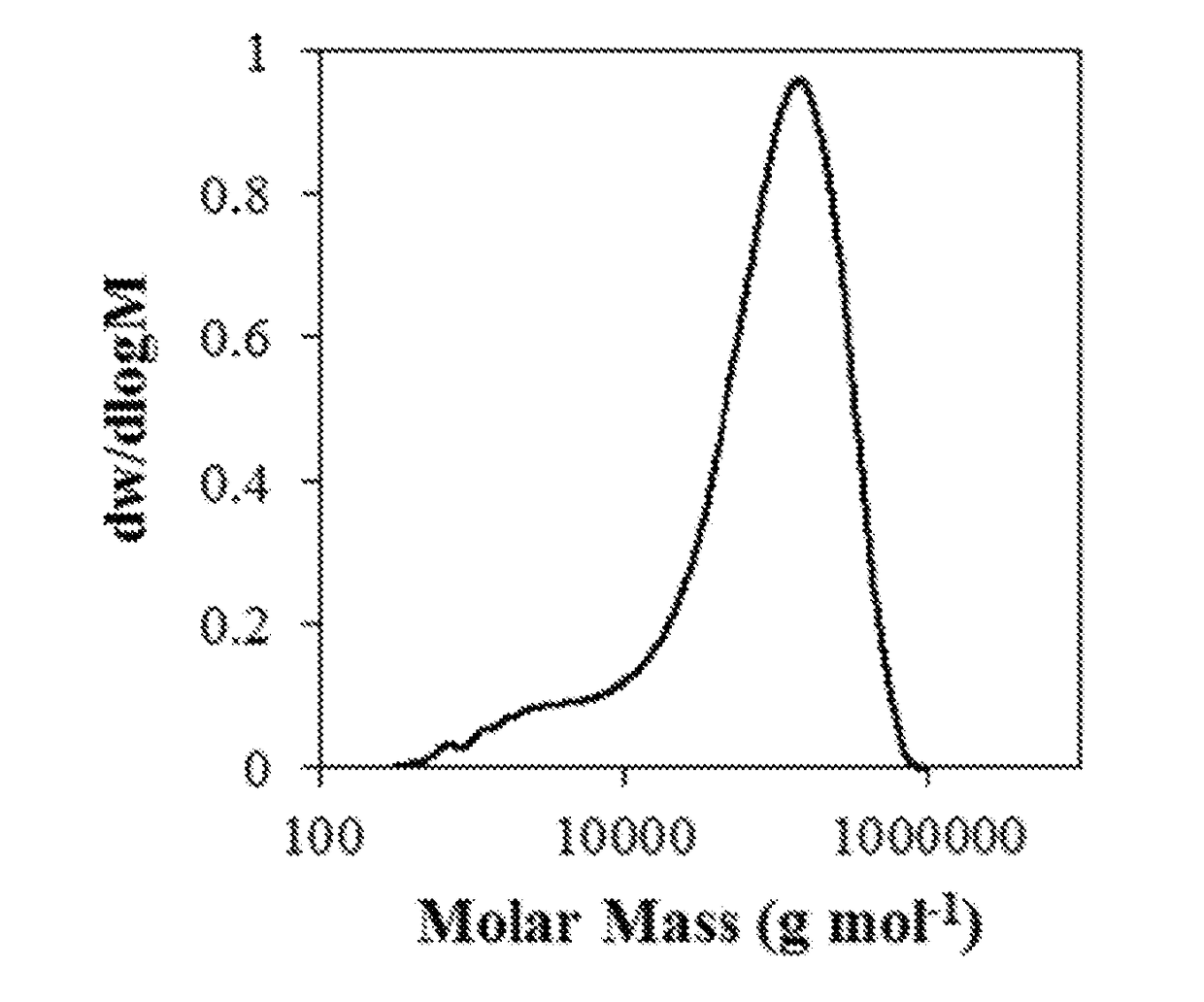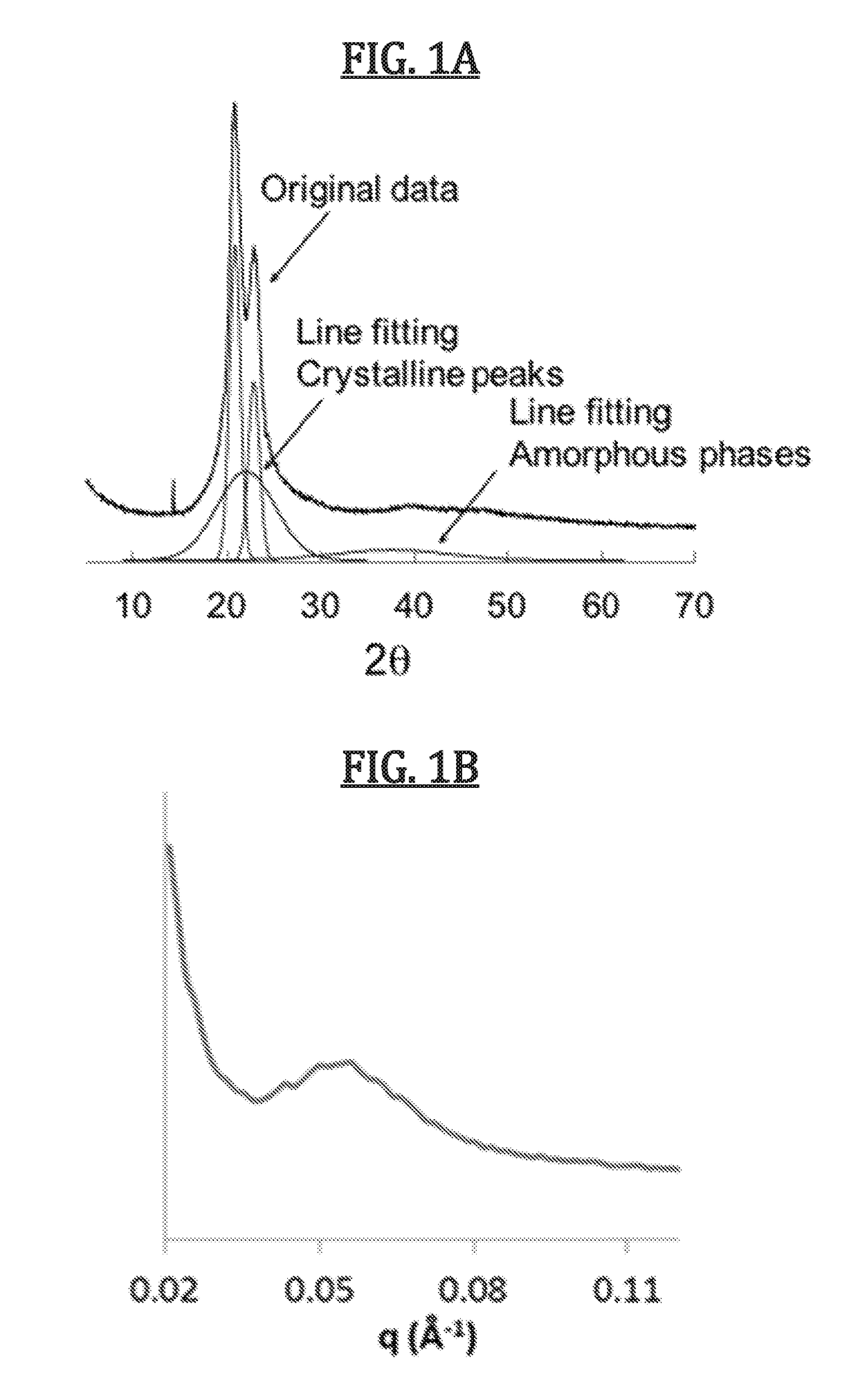Biomimetic synthetic rubber and methods for controlling its physical properties through backbone double bond stereochemistry by monomer selection and end group modification
a biomimetic synthetic rubber and monomer technology, applied in the field of biomimetic elastomer composition, can solve the problems of limited application of the underlying chemical principles to other systems, lack of synthetic methods that can deliver both controlled double bond stereochemistry and polymers with high molar mass, and achieve high cis- or trans-double bond content, the effect of high molar mass materials
- Summary
- Abstract
- Description
- Claims
- Application Information
AI Technical Summary
Benefits of technology
Problems solved by technology
Method used
Image
Examples
experimental examples
[0106]The following experiments and examples are offered to more fully illustrate the invention, but are not to be construed as limiting the scope thereof. Further, while some of examples may include conclusions about the way the invention may function, the inventor do not intend to be bound by those conclusions, but put them forth only as possible explanations. Moreover, unless noted by use of past tense, presentation of an example does not imply that an experiment or procedure was, or was not, conducted, or that results were, or were not actually obtained. Efforts have been made to ensure accuracy with respect to numbers used (e.g., amounts, temperature), but some experimental errors and deviations may be present. Unless indicated otherwise, parts are parts by weight, molecular weight is weight average molecular weight, temperature is in degrees Centigrade, and pressure is at or near atmospheric.
example 1
A. Synthetic Procedures
1. Reagents
[0107]The following chemicals were used as received: acetonitrile (MeCN: Sigma-Aldrich, >99.5%), 1,4-butanediol (Sigma-Aldrich, 99%), chloroform (CHCl3: VWR Chemicals, 99%), d-chloroform (CDCl3: Apollo, >99%), 1,8-diazabicyclo[5.4.0]undec-7-ene (DBU: Sigma-Aldrich, 98%), diethyl ether (Et2O: Sigma-Aldrich, 99.8%), N,N-dimethylformamide (DMF: Fisher Scientific, LR grade), 2,6-di-tert-butyl-4-methylphenol (BHT: Alfa Aesar, 99%), ethyl acetate (EtOAc: Fisher Scientific, LR grade), hexane (VWR Chemicals, 99%), 1,6-hexanediol (Sigma-Aldrich, 99%), magnesium sulfate (MgSO4: anhydrous, Fisher Scientific, LR grade), 1,3-propanediol (Sigma-Aldrich, 98%), propiolic acid (Acros Organics, 98%), silica gel (SiO2: Apollo Scientific, 40-63 micron), sodium chloride (NaCl: Fisher Scientific, >99%), sodium hydrogen carbonate (NaHCO3: Fisher Scientific, >99%), sulfuric acid (Fisher Scientific, >95%), triethylamine (Et3N: Fisher Scientific, LR grade), trifluoroacetic a...
example 2
[0158]Dithiol monomers were obtained from commercial sources and used after purification by distillation. Multi-functional alkyne monomers were obtained by sulphuric acid-catalyzed Fischer esterification of propiolic acid and the corresponding diol in a 2:1 ratio using a Dean-Stark apparatus at 120° C. Thiol-yne step growth polymerization was undertaken by combination of dialkyne and dithiol monomers in equimolar ratio in CHCl3 at −15° C. before addition of 1 mol % 1,8-diazabicycloundecene (DBU) as catalyst. The exothermic reaction was allowed to warm to room temperature and stirred for 1 h before dilution with CHCl3, addition of 2,6-di-tert-butyl-4-methylphenol (BHT, 5% wt) to prevent undesired radical reactions and precipitation into diethyl ether. Modification of molar mass of the polymers was undertaken by changing the amount of dithiol in relation to the dialkyne such that the dialkyne was always in excess, and control over % cis content of the polymers was obtained by using Et...
PUM
| Property | Measurement | Unit |
|---|---|---|
| MW | aaaaa | aaaaa |
| Tg | aaaaa | aaaaa |
| elastic modulus | aaaaa | aaaaa |
Abstract
Description
Claims
Application Information
 Login to View More
Login to View More - R&D
- Intellectual Property
- Life Sciences
- Materials
- Tech Scout
- Unparalleled Data Quality
- Higher Quality Content
- 60% Fewer Hallucinations
Browse by: Latest US Patents, China's latest patents, Technical Efficacy Thesaurus, Application Domain, Technology Topic, Popular Technical Reports.
© 2025 PatSnap. All rights reserved.Legal|Privacy policy|Modern Slavery Act Transparency Statement|Sitemap|About US| Contact US: help@patsnap.com



